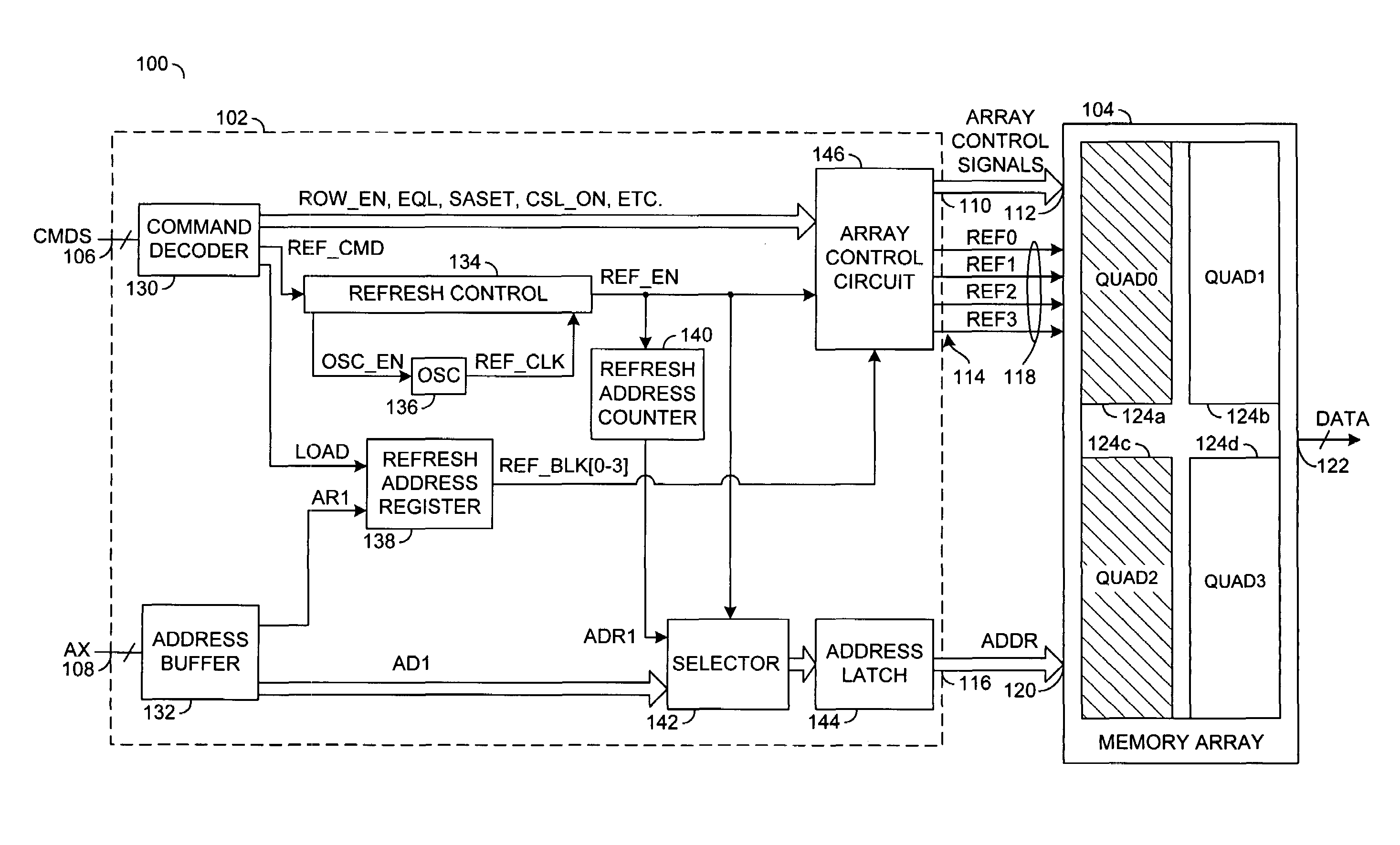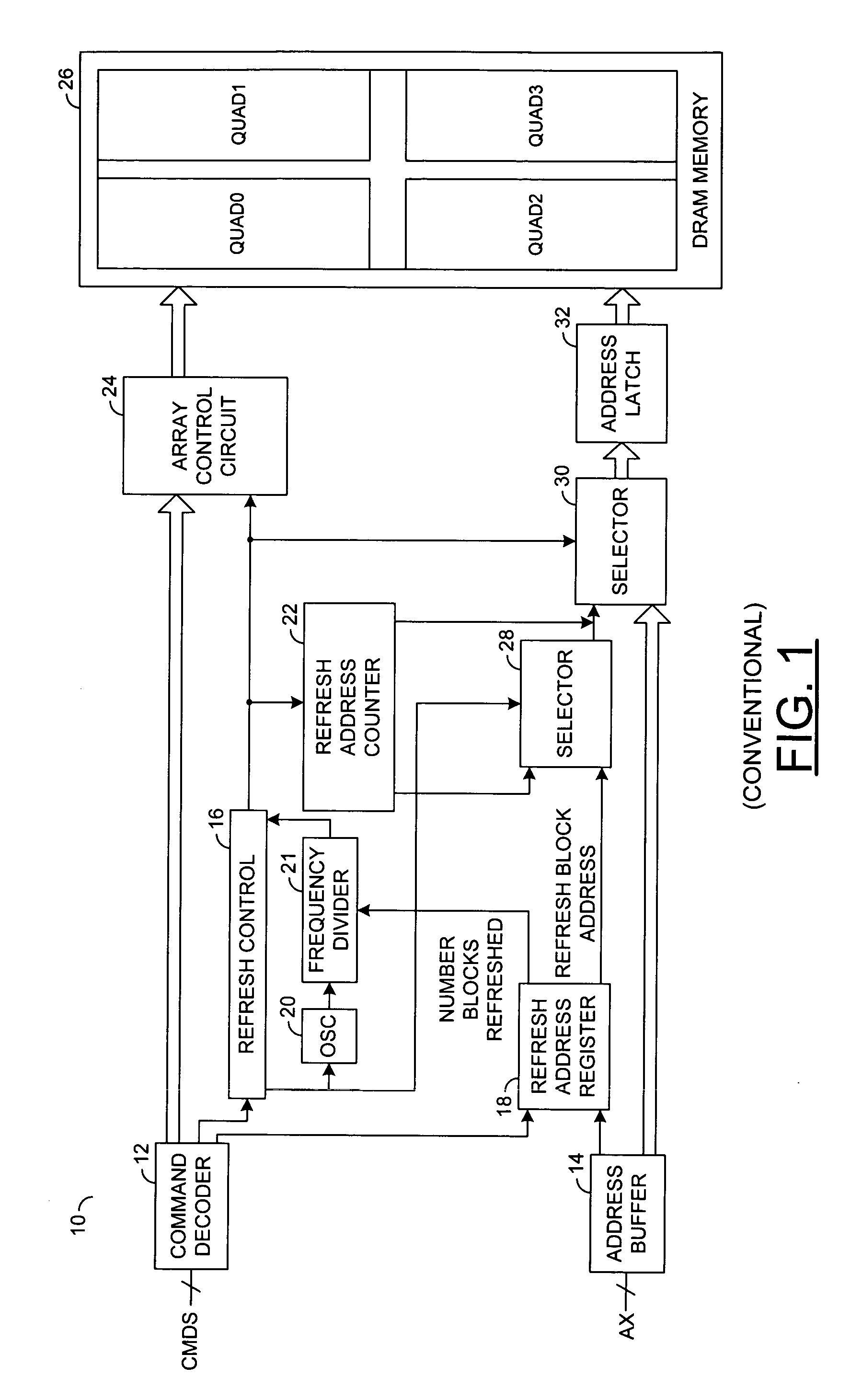Method and architecture for reducing the power consumption for memory devices in refresh operations
a memory device and power consumption technology, applied in information storage, static storage, digital storage, etc., can solve the problems of reducing the power consumption further in the standby mode, activating the periphery array circuit of all four quadrants, etc., and achieve the effect of reducing the power consumption of memory devices and reducing the standby power requirements of memory devices
- Summary
- Abstract
- Description
- Claims
- Application Information
AI Technical Summary
Benefits of technology
Problems solved by technology
Method used
Image
Examples
Embodiment Construction
[0022]Referring to FIG. 2, a block diagram of a circuit 100 is shown in accordance with a preferred embodiment of the present invention. The circuit 100 may be implemented, in one example, as a memory device configured to perform refresh operations on all or a subset (portion) of the memory cells of the memory device. The circuit 100 may comprise a circuit (block) 102 and a circuit (block) 104. The circuit 102 may be implemented as a control circuit. The circuit 104 may be implemented as a memory array. The memory array 104 may be implemented with a plurality of sections. Each of the sections may comprise a number of memory cells and periphery array circuitry configured to access the memory cells. The memory cells are generally arranged in rows and columns. During a refresh operation, the circuit 102 may be configured to (i) enable the periphery array circuitry that corresponds to the sections being refreshed and (ii) disable the periphery array circuitry that corresponds to the sec...
PUM
 Login to View More
Login to View More Abstract
Description
Claims
Application Information
 Login to View More
Login to View More - R&D
- Intellectual Property
- Life Sciences
- Materials
- Tech Scout
- Unparalleled Data Quality
- Higher Quality Content
- 60% Fewer Hallucinations
Browse by: Latest US Patents, China's latest patents, Technical Efficacy Thesaurus, Application Domain, Technology Topic, Popular Technical Reports.
© 2025 PatSnap. All rights reserved.Legal|Privacy policy|Modern Slavery Act Transparency Statement|Sitemap|About US| Contact US: help@patsnap.com



